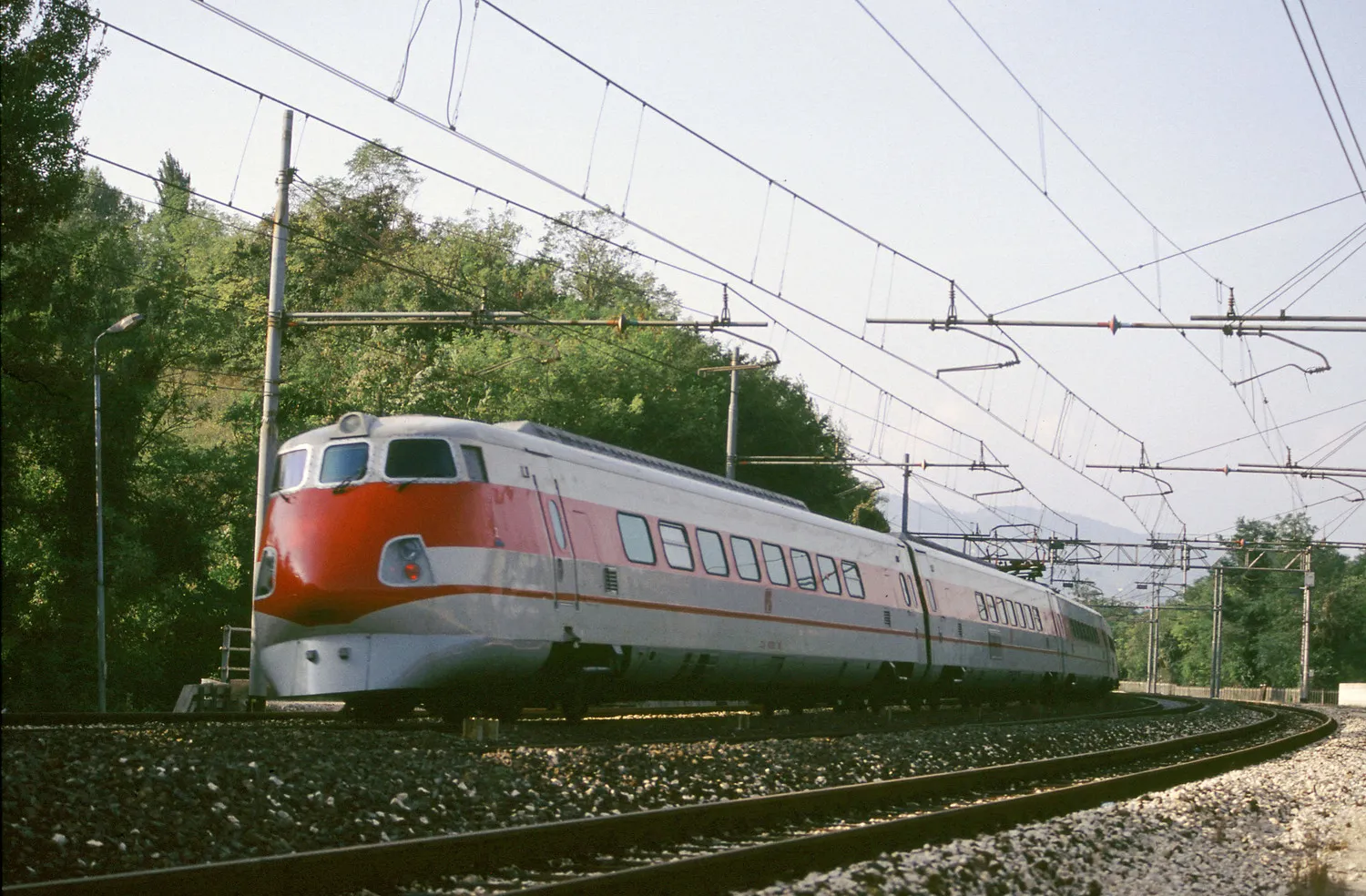
Source: it.wikipedia.org
Also known as:
Vehicle type:
Registration country:
Railway companies:
1988
Built in a blocked convoy configuration of nine elements, the ETR.450 reaches a maximum speed of 250 km/h, powered by direct current at 3 kV, with engines distributed throughout the convoy design (two per box, excluding the trailer). This advancement allows Italy to become the second European country to operate trains exceeding 200 km/h for scheduled services. It significantly reduces travel time between Rome and Milan from 4 hours and 55 minutes to 3 hours and 58 minutes, originally offering exclusive first-class service. Early operational challenges are noted in media reports; however, data from the first six years indicate a failure rate of only 0.78 failures per million kilometers, marking substantial improvement over earlier models.
The ETR.450 retains the external design of the ETR.401, but incorporates various technical innovations derived from prior experiments. A key advancement is the shift from traditional rheostatic regulation to an electronic fractionator drive for continuous speed regulation, while the pendulum system, featuring electro-hydraulic drives, sees a reduction in amplitude from 10 to 8 degrees.
As service expands during the 1988-1989 winter timetable, additional trains are introduced to facilitate routes to Turin and Naples, increasing train composition to eight elements and offering a total of 340 seats. The following years witness further enhancements, including the addition of a central towed carriage in 1990-1991, raising capacity to 386 seats. From 1991, the ETR.450 begins to operate fast services on popular weekend routes, still maintaining an exclusive first-class service initially.
Sources: https://it.wikipedia.org/wiki/Elettrotreno_FS_ETR.450
1993
*Eurostar Italia was a service category operated by Trenitalia until December 2012. It initially designated high-speed and premium intercity trains connecting major Italian cities, primarily Milan and Rome, and later expanded to include other routes such as Rome - Ravenna and Rome - Reggio Calabria. Introduced in 1997, it replaced the Pendolino category and was used for various tilting and high-speed trains, particularly those employing ETR 460, ETR 480, and ETR 485 trainsets. In June 2012, the Eurostar AV category was eliminated and fully rebranded as Frecciarossa and Frecciargento, while the remaining Eurostar Italia trains - mainly those on Rome - Ravenna and Rome - Reggio Calabria routes - continued to operate under the name until December 2012. These services, despite being similar in speed to Frecciabianca, had different onboard offerings and were priced accordingly. With the introduction of the 2012 winter schedule, all remaining Eurostar Italia services were reclassified as Frecciabianca, marking the end of the Eurostar Italia brand in Italy’s railway network.
Sources: https://it.wikipedia.org/wiki/Elettrotreno_FS_ETR.450, https://it.wikipedia.org/wiki/Eurostar_Italia
2000s
Sources: https://it.wikipedia.org/wiki/Elettrotreno_FS_ETR.450
2013
October 3
Sources: https://it.wikipedia.org/wiki/Elettrotreno_FS_ETR.450
2014/15
By March 31st, 2015, unit ETR 450 04 transitions to the Bologna OGR for restoration, becoming part of the FS Italiane Foundation's historical rolling stock collection, while the rest of the fleet is designated for demolition.
Sources: https://it.wikipedia.org/wiki/Elettrotreno_FS_ETR.450
Do you have additional informations regarding this vehicle?
Help us writing the history of ETR.450! Your knowledge is precious for us and the entire community, do not hesitate to share your facts, photos or videos:
Latest update on the 19th of January 2025 at 00:38
Contributor(s): Tudor C.
Discussion forum















